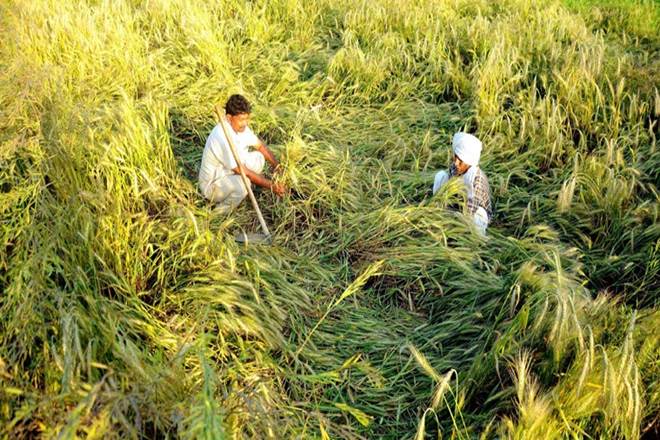 13-11-2019
13-11-2019
Modi’s PM Fasal Bima Yojana under stress: ICICI, Tata, two other private insurers drop out of scheme

 Insurance Alertss
Insurance AlertssModi’s PM Fasal Bima Yojana under stress: ICICI, Tata, two other private insurers drop out of scheme
Four private insurance companies — ICICI Lombard, Tata AIG, Cholamandalam MS, and Shriram General Insurance — have opted out of the government’s flagship corp insurance scheme, PM Fasal Bima Yojana (PMFBY), for both the kharif and rabi seasons of the 2019-20 crop year, as the claims ratios in the states where they were operators in the previous year were quite high, leading to losses from the business. Crop damages in Maharashtra, Andhra Pradesh, Haryana and Chhattisgarh in crop year 2018-19 pushed the claims by farmers up against the premium collected by the insures, to over 100% (see chart), even as the ratio on a pan-India basis was only 75.4%.

As the claims for kharif 2019 are currently being compiled by the insurers (harvesting of the crop is on), indications are that the claim to premium ratio could be very high in many states including Maharashtra and Karnataka where the prolonged monsoon rains damaged key crops like pulses, cotton and soyabean.
“Only 13 companies participated in the bidding process this year as against 17 last year. This has also increased the premium and the burden on the government,” an official source said. Under PMFBY, farmers pay a fifth of the required premium while the Centre and state governments contribute the balance amount on a 50:50 basis.
After the initial years (the scheme was launched in kharif 2016) when it looked coming apart, the NDA government’s flagship crop insurance scheme later appeared consolidating itself. Despite 2018 having seen moderate monsoon deficiency and somewhat uneven spread of rains in areas crucial for farming, the claims made by farmers under PMFBY for the year’s summer crop was a quarter less than the premium collected by insurers; in the year-ago season, the ratio was 95%.
With state governments shedding their initial ambivalence towards the scheme, premium inflows have become more robust and prompt. There were reports that private insurers were raking in huge profits from PMFBY; the decision of the four leading private players to opt out for 2019-20 season however disproves the notion that the crop insurance scheme is a cash cow for the insures.
Before the launch of PMFBY only state-owned insurance companies were in the crop insurance business and since the government was meeting their losses, there was no real market-determined discovery of premium or claims settlement. Currently, five state-owned general/agri insurers have a share of more than half in the crop insurance business and losses from PMFBY have hit their bottom lines. According to sources, there was a dispute related to the kharif 2018 groundnut crop in Barmer district of Rajasthan where Tata AIG had enrolled farmers under PMFBY, which resulted in the insurer not being in the fray for the kharif 2019 season. While the company claimed there was no sowing, the state government asked it to pay 100% for damage.
ICICI Lombard’s loss ratio in the crop insurance business was 135% in FY18 and 106.5% in FY19. Loss ratio is losses (paid claims plus adjustment expenses) to premiums earned. In Maharashtra, the company had to settle claims of farmers due to drought in many regions of the state in 2018. Cholamandalam said in its annual report for FY19, referring to rising losses in the crop insurance portfolio, “The company has decided to take a pause in this line of business for FY 2019-20 and will closely monitor emerging developments for re-entry at a later stage”.
According to data analysed by FE, the lower number of participants has resulted in higher premium for the crops in some states which were reported crop damage due to drought last year. The premium to sum insured ratio in Rajasthan increased to 20.4% during kharif 2019 from 16.3% year-ago. Similarly this ratio jumped to 14% from 11% in Chhattisgarh, to 10.3% from 8.3% in Haryana and to 9.4% from 8.1% in Andhra Pradesh.
Since farmers pay a fixed premium, the subsidy burden on the government increases when premium rates go up. Insurance is taken by farmers before sowing and the premium quoted by the insurance companies is mainly based on monsoon forecast. Under PMFBY, launched in 2016, farmers pay 1.5% of sum insured for rabi crops and 2% for kharif while it is 5% for cash crops. The government has been mulling a number of steps including creating a pool for crop insurance and putting a ceiling on premium as part of next phase of reforms in the flagship scheme.
The premium rose to even 60% (of sum insured) for one crop in a district in Rajasthan during last-year kharif. The gross premium collected by insurance companies has been increasing through every season in the past three years while the number of insured farmers are either constant or have declined. In the last three kharif seasons, the country had faced normal and close to normal monsoon in two years while another year was 9% below normal. But, due to a good distribution of rainfall, the country had record production of foodgrains in 2018-19. This year monsoon ended with 10% above normal for the whole season while 52% more rainfall than LPA during September alone has submerged many crops in states like Maharashtra, Karnataka and Bihar.
The insurers are estimated to have made a surplus of Rs 9,500 crore in the first three crop seasons (after the scheme was launched in 2o16). However, their profit could be around Rs 5,000 crore after factoring in expense ratio at 10 to 15% of the premium collected by the companies. However, with claims and reinsurance costs rising, the profits have been lately hit.
Source: Financial Express
